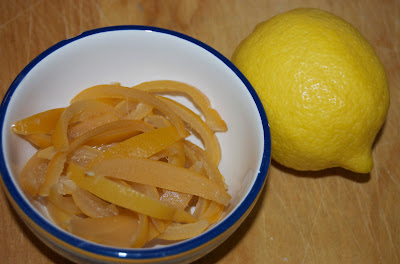For a preview of what we might expect to find on the table, our friends Pat and Aaron invited us to dinner at Sassi in Encino for a meal that was not only Moroccan but kosher as well. As is our custom, we ordered several items and ate family style. Their young daughter, Gabriella was game for it the adventure, a real trooper. No kid chow for THIS intrepid gal! That made the evening even better--who knew eight-year-olds like mushrooms?!
Morocco may be in North Africa, but its cuisine contains a hefty blend of Mediterranean and Middle Eastern influences. If you know those cuisines, there will be a familiarity as you delve into your meal, just with a heavy dose of spices.
We started with a platter of fried kuba, little semolina footballs filled with ground beef; pastels, triangular filo pockets filled with potato; falafel, fried balls of ground garbanzo beans; and Moroccan cigars, which I'd liken to a filo "stogie" filled with ground beef. And a dish of hummus to dredge them all through. You really have to approach these babies with caution, because they're so dense and filling you could easily stuff yourself before the entrées arrive. And they're so good that it's difficult to stop with just one of each. Why does fried food have to be so ridiculously satisfying?
The myriad little dishes of salads on the table reminded me of our Israeli meal. We had carrot salad and red and green cabbage salads. The fresh crispness of the salads with their lemony essence helped balance those heavy fried goodies we'd just gobbled up. The flat bread, khobz, is thicker and more substantial than other pita-type bread I've had before. It was a good all-purpose tool for dipping, dredging and sandwich building.
We also got an Israeli salad of cucumbers and tomatoes and an entire bowl of olives. These Moroccan olives are cooked in a peppery red sauce and served warm, which cuts their brininess and enhances their flavor. Oh yes, that's a whole baked chicken in the background, a tasty little guy smothered in mushrooms and love.
Variety was the order of the evening, as we opted to have some fish and lamb to go with our roasted chicken and all the rest (I wonder how you say "fixins" in Moroccan?). The super-fresh salmon is cooked in a spicy, garlicky tomato sauce. I could have forgone the rest of the meal to mop up all that pleasantly warm and happy sauce with the khobz.
The roasted lamb was served with a rice and lentil combo called majadra, making it a sort of North African pilaf. You'll have to forgive me, but at this point my full tum and empty brain conspired to make me forget exactly how this lamb tasted--besides good. I plan to return just for the lamb. Oh yeah, and all the rest as well...
One of the secret weapons of Moroccan cooking is brined lemon, which is pure salty, pickled magic. It's made by slitting and stuffing fresh lemons with salt and stashing them in a jar of brine and lemon juice for a few months, which makes them self-pickling. Do this and you elevate those lemons to new heights of culinary usefulness. What the process does is to intensify the lemon quality--not the tartness, as you might expect, but the sheer lemony flavor. It ferments, sort of like kimchi, so a richness develops that makes them a great flavoring agent. If you don't want all that salt, just wash it off.
To accompany the tagine I made a Moroccan orange salad, one of the easiest and yummiest things you can make, and great anytime, regardless of the menu. The genius of this salad is that it's quick, healthy and versatile.
Moroccan Orange Salad
Peel and segment two oranges and place them in a bowl. Remove the pits from four dates, cut them into eighths long ways and add them to the bowl. If you'd like, toss in a few oil-cured olives. Sprinkle over some ras-el hanout, about a half teaspoon, or if you don't have any, use an assortment of any spices that makes you happy--cinnamon, clove, nutmeg and/or my personal favorite, cardamom. Drizzle on a bit of good olive oil and toss. Top it with some chopped fresh mint. That's all there is to it. If you have a few minutes, let it sit on the counter so the flavors have time to cozy up to each other.This will serve two people, and the recipe is easy to expand to feed more. I find that once I've had this salad with a meal, I don't go looking for dessert.














No comments:
Post a Comment